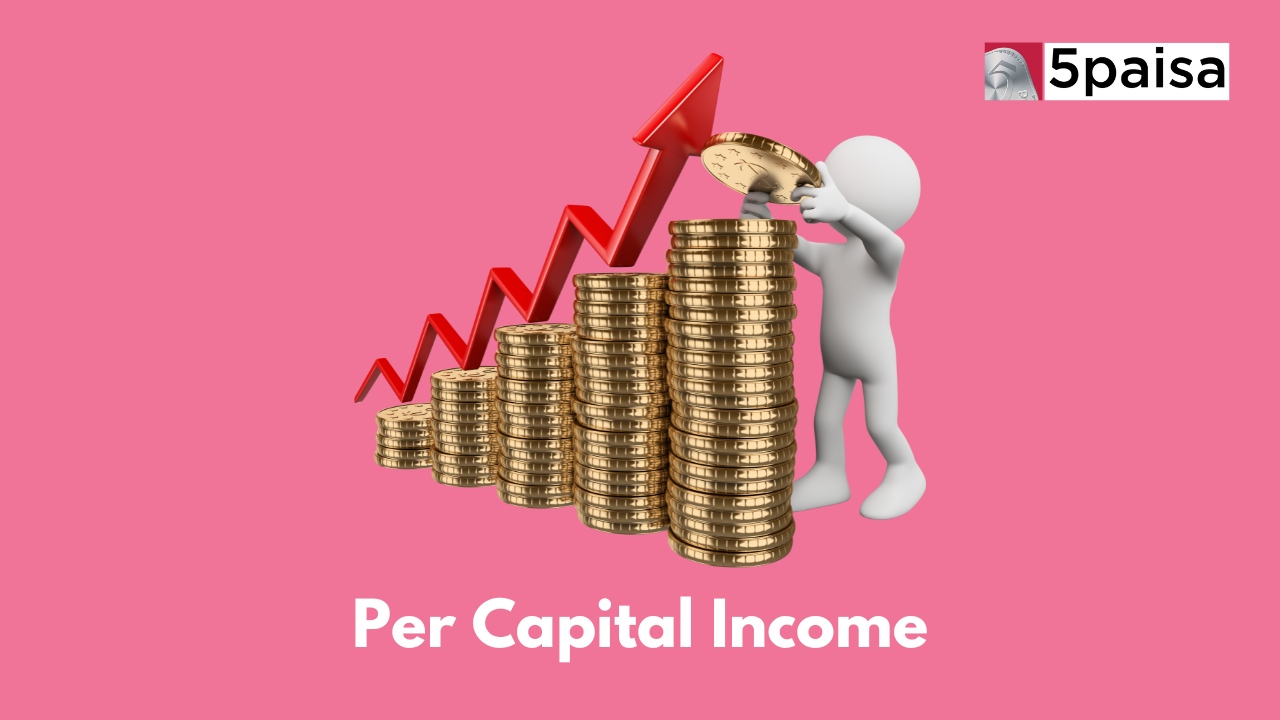How Is Per Capita Income Calculated: A Comprehensive Guide

Last Updated: 24th May 2024 - 12:36 pm
Per capita income is an important economic indicator that measures the average income earned by an individual within a country or region. Understanding how it is calculated is essential for assessing a population's economic well-being and standard of living.
What Is Per Capita Income?
Per capita income measures individuals' average income within a specific geographic area, such as a country or region. It is calculated by dividing a country's total national income or Gross Domestic Product (GDP) by its total population.
In essence, per capita income represents the average income that each person would receive if the country's total income were evenly distributed among its residents.
Per capita income is widely used to indicate a nation's economic well-being and standard of living. It provides insights into a population's purchasing power and living standards, allowing for comparisons between different countries or regions. However, it is important to note that per capita income does not consider income inequality within a population, as it represents an average value.
How is per capita income calculated?
Per capita income is calculated by dividing a country's total national income or Gross Domestic Product (GDP) by its total population. This calculation provides an average income figure for each individual within the population, allowing for comparisons and assessments of economic well-being and living standards.
Why Does Per Capita Income Have Importance?
1. Income Inequality Assessment: Economists can identify income inequality within a population by comparing per capita income with actual income distributions. Countries with high per capita income but significant income disparities may have uneven wealth distribution.
2. Economic Development Comparison: Per capita income allows for comparisons of economic development and living standards across different countries or regions. Higher per capita income generally indicates a higher standard of living and greater economic prosperity.
3. Economic Policy Development: Policymakers use per capita income data to develop and tailor economic policies to improve the population's well-being and address specific areas that require economic development.
4. Investment and Marketing Decisions: Investors and marketers utilise per capita income data to gauge a population's purchasing power and make informed decisions regarding potential markets and investment opportunities.
The Formula For Calculating Per Capita Income
The per capita income is relatively straightforward:
Per Capita Income = Total National Income (or GDP) / Total Population
To calculate per capita income, two key components are required:
1. Total National Income or Gross Domestic Product (GDP): This is the total value of all goods and services produced within a country's borders in a specific time period, usually a year.
2. Total Population: This refers to the number of individuals residing within the country or region for which the per capita income is calculated.
By dividing the total national income or GDP by the total population, the resulting figure represents the average income that each individual would theoretically receive if the country's total income were distributed equally among all residents.
It's important to note that while per capita income provides an average, it does not account for income inequalities or disparities within a population.
How is per capita income calculated in India?
In India, per capita income is calculated by dividing the country's total national income or Gross Domestic Product (GDP) by its total population. This calculation provides an average income figure for each individual residing in India, allowing for assessments of economic well-being and living standards.
How Is Per Capita Income Calculated In India (With Example)
To calculate per capita income in India, the following formula is used:
Per Capita Income = Total National Income (or GDP) of India / Total Population of India
Let's illustrate this with an example:
Suppose India's total national income (or GDP) for a given year is ₹180 trillion, and the total population is 1.4 billion.
Per Capita Income = ₹180 trillion / 1.4 billion Per Capita Income = ₹128,571
This means that if India's total national income were evenly distributed among its population, each individual would receive an average income of ₹128,571 for that year.
It's important to note that this calculation provides an average figure and does not account for income inequalities or disparities within the Indian population. Nevertheless, it serves as a useful indicator for assessing the country's overall economic well-being and standard of living.
Limitations Of Per Capita Income
1. Income Distribution: Per capita income does not account for income inequality within a population. It represents an average value, but the actual distribution of income may vary significantly.
2. Purchasing Power: Per capita income does not consider differences in purchasing power or the cost of living across different regions or countries, which can influence the actual standard of living.
3. Non-Monetary Factors: Per capita income solely focuses on monetary income and does not account for non-monetary factors that contribute to overall well-being, such as access to healthcare, education, and quality of life.
4. Informal Economy: The calculation of per capita income may not accurately capture income from the informal economy, which can be significant in some countries or regions.
5. Population Composition: Per capita income does not distinguish between different age groups or employed and non-employed individuals, potentially skewing the results.
While per capita income provides a broad overview of economic well-being, it should be interpreted with other socioeconomic indicators to better understand a population's living standards.
Conclusion
Per capita income is a valuable economic indicator that provides insights into a country's or region's average income levels and standard of living. By understanding how it is calculated and its limitations, policymakers, investors, and individuals can make informed decisions and assess economic well-being more holistically.
- Flat ₹20 Brokerage
- Next-gen Trading
- Advance Charting
- Actionable Ideas
Trending on 5paisa
Disclaimer: Investment in securities market are subject to market risks, read all the related documents carefully before investing. For detailed disclaimer please Click here.
 5paisa Research Team
5paisa Research Team
 Sachin Gupta
Sachin Gupta
 Nutan Gupta
Nutan Gupta